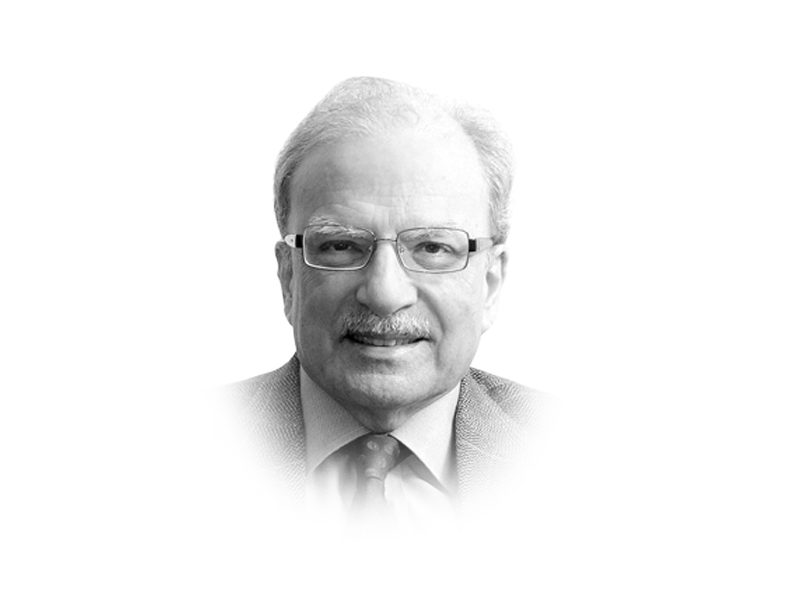
Looking back at history, we come across many examples of the difficulties encountered in building nations by overcoming the power exercised by ethnicity over the people who live within the demarcated boundaries of a state. There are many instances from around the world were ethnicity is making it difficult to build nations. I used the case of Pakistan to make this point in my 1968 book, Pakistan: A Nation in Making.
One vivid examples of the importance of ethnicity was the chain of events that followed the departure of the British from the South-Asian Sub-continent in 1947. At the time the British decided to abandon their Indian colony, the place they had governed for 200 years had 400 million people of which 100 million were Muslims. Muslims were concentrated in the colony’s two areas. About 70 million were equally divided between the areas to the northwest and the northeast. The remaining 30 million were spread all over the Indian British domain. Eight million of these migrated to Pakistan, still leaving 22 million behind. Their number has increased almost ten-fold, to 200 million, accounting for 15% of modern India’s total population. For several decades, India had found a way of keeping together its very diverse population by practicing of what some historians called the “idea of India”. This referred to the adoption of policies and institutions that provided accommodation to the country’s diverse groups. However, by opting for Hindutva, an extremist Hindu governing philosophy, Prime Minister Narendra Modi and his Bharatiya Janata Party (BJP) have created serious problems for themselves and the diverse nation over which they rule.
The creation of Pakistan in 1947, following a short campaign, put religion out in front although Muhammad Ali Jinnah, the country’s founding father, had other factors in mind. Among these, cultures and society’s mores were important in his thinking. Religion could not keep together two distinctly separate groups — the Bengalis and the West Pakistanis — within the boundaries of the state Jinnah had created. Jinnah’s only visit to East Pakistan after he became the country’s Governor General resulted in tragedy. His suggestion that Urdu should be Pakistan’s national language was not received well by the country’s Bengali citizens. The result was what came to be called the “language riots” in which many lives were lost. Pakistan in its original form survived for less than a quarter century, from August 1947 to December 1971. After a bitterly fought civil war, Bangladesh was born as an independent state. As its name suggests, the new state identified itself as a Bengali entity — the desh, the country, of the Bengalis — rather than treat religion as the defining factor of nationhood.
Perhaps the best recent example of the influence of ethnicity on nation-building is Yugoslavia, once a country in Europe’s southeast. When Germany and the Ottoman Empire were defeated in the First World War, the ground held by the Turks in Europe and the Middle East was divided into several small states. Some of these were clustered together to form the Kingdom of Slovenes, Croats and Serbs. The country’s name suggested that it was a collective entity made up of several ethnic groups. On October 3, 1929, the country’s name was changed to Kingdom of Yugoslavia. Another change came after the end of the Second World War when the three victors of the conflict met in Yalta. Two of them, Franklin Delano Roosevelt, the American president, and Winston Churchill, the British prime minister, were old and in poor health. Joseph Stalin, the Soviet leader, was young and vigorous. He dominated the discussions and came out from the meeting the real winner.
Among the concessions given to him was the acceptance of the Soviet Union’s influence over the eastern part of Europe. Yugoslavia was to include a number of ethnic principalities and was to be governed from Belgrade by the Communist Josip Broz Tito as its dictator. Tito’s Yugoslavia was an ethnic composite, dominated by the Serb people who followed the Christian Orthodox faith. Also present were the Bosnians, Kosovos, and Croats. The first two of these were Muslims who traced their origin to the Ottoman rule over this space. Tito’s death resulted in bloody civil wars until the Americans intervened by bombing Serb areas. The use of American force resulted in the signing of the Dayton Accord named after the Ohio city. The accord created a number of mini-ethnic states in former Yugoslavia.
Another example of the ethnic foundation of states is Sudan in northeast Africa that was ruled over by the British as a part of larger Egypt. When London withdrew from the area, Sudan was created as an independent state in 1953. But even that solution did not work. The Sudanese regime opted for strict adherence to the tenants of Islam for governing its diverse population. At one point they provided a sanctuary to Osama bin Laden who had set up a group of Islamic revolutionaries and called it Al Qaeda. The aim of the group was to expel the West from the Muslim world. However, by strictly adhering to Islam, the Sudanese government based in Khartoum was not able to bring peace to the country because of the tension between the Arab ethnic group in the north and blacks in the north. South Sudan gained independence in 2011.
When the European colonisers drew the boundaries of the countries they were creating, they paid some attention to religion but mostly disregarded the role of ethnicity in holding people together. The extreme volatility in the Middle East in the last several decades can be traced to the way the Europeans abandoned this area. The way the states of Iraq, Syria and Jordan were carved out of the Ottoman area is the persistence of the conflict between the Turkish state and the Kurdish ethnic group that is spread over a number of states in the Middle East.
Is it possible to reconcile ethnicity to nation-building? The answer is “yes” if strong political and economic institutions are built that can accommodate people who speak different languages and follow different religions and cultures. The European Union and the pre-Modi India are recent examples of building stable political entities within contiguous geographic space. But this kind of nation-building has to be constantly watched over or else tensions can appear within groups of different ethnic backgrounds. This has happened in both Europe and India. Britain chose to exit the EU when some of its people got weary of having Brussels rather than London determine the way they live. India’s Modi and his political organisation, the BJP, have chosen to adopt the extremist Hindu governing philosophy, the Hindutva, for governing the large and diverse country. About 80% of India’s population follows the Hindu faith but only half of them would be seen as extremists. About 20% of the population subscribes to entirely different faiths. India can only be kept together as a nation if it is governed by inclusive institutions in which its entire population has total faith. This is not the direction in which Modi is going.
Published in The Express Tribune, February 22nd, 2021.
Like Opinion & Editorial on Facebook, follow @ETOpEd on Twitter to receive all updates on all our daily pieces.

1736159581-0/zendaya-(1)1736159581-0-165x106.webp)

1736156201-0/Untitled-design-(66)1736156201-0-165x106.webp)
1736154581-0/Untitled-design-(65)1736154581-0-165x106.webp)














COMMENTS
Comments are moderated and generally will be posted if they are on-topic and not abusive.
For more information, please see our Comments FAQ